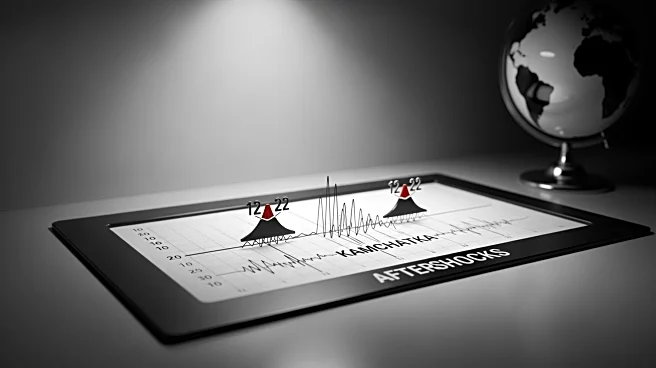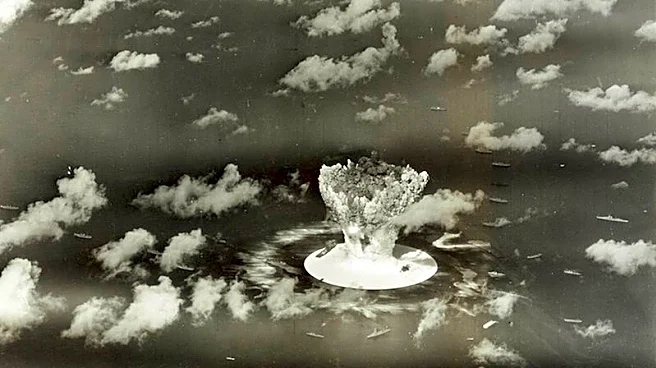What's Happening?
Two moderate earthquakes, measuring 5.2 and 5.3 in magnitude, struck Russia's Kamchatka Peninsula, as reported by the United States Geological Survey (USGS). This region is known for its seismic activity,
being part of the Pacific Ring of Fire. The recent quakes are part of a series of seismic events following a significant 8.8-magnitude earthquake in July 2025, which was one of the strongest globally since the 2011 Tōhoku disaster in Japan. No immediate injuries or significant damage were reported from the latest quakes, but seismologists are closely monitoring the situation for potential aftershocks and risks to the broader Pacific region.
Why It's Important?
The Kamchatka Peninsula's seismic activity underscores the ongoing threat posed by the Pacific Ring of Fire, a major tectonic zone. The July 2025 earthquake prompted tsunami warnings across the Pacific, affecting areas as far as Alaska, Hawaii, and the US West Coast. The recent earthquakes serve as a reminder of the potential for large subsea seismic events to trigger trans-Pacific tsunami alerts, posing risks to coastal communities. The USGS has recorded numerous aftershocks since the July event, indicating a persistent seismic threat that could have significant implications for disaster preparedness and response strategies in the Pacific region.
What's Next?
Seismic monitoring agencies, including the USGS and Russia's United Geophysical Service, are actively observing ongoing aftershocks and updating hazard assessments. Disaster response agencies remain on high alert, prepared to issue additional tsunami warnings if necessary. The USGS aftershock forecast suggests that Kamchatka could experience more strong seismic events in the coming months or years, maintaining a continued risk to local populations and across the Pacific basin.













